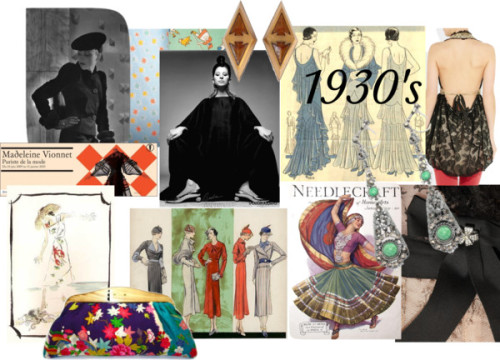In the wake of a terrible war, one on a scale previously unseen by the world, came great privations. The global economy took quite a hit, while reparations were being made, and all the while in the background, there was talk of another war.
Interestingly enough, it is when times are hardest that fashion becomes more flamboyant, almost as if in a proud refusal to be put down. In the case of the Great Depression, two factors played a major role in creating the mood which influenced the sartorial trends of the time. The first was a terrible romance attached to the memories of the war gone by and the one in the making, of the privations and sacrifices that had been made and would continue to be necessary for the foreseeable future, and the need to forget the bad and cling to the good. Hollywood, which was fast becoming a force to reckon with, tapped into this mood, and for the first time, films were a major inspiration for fashion.
The second was the fact that natural textiles were made scarce - fabrics like silk and cotton were no longer as readily available as before, and manufacturers were forced to think outside the box, and synthetic fabrics came into greater prominence.
There was a return to feminine lines and elaborate designs. Madame Gres was known for her intricate draping and impeccable cuts. Elsa Schiaparelli was one of the first designers of the time to jump into collaboration with prominent artists of the time - the Lobster dress worn famously by Wallis Simpson, was the result of her designs meeting the art of Salvador Dali. We also have Madeleine Vionnet to thank for the cowl neck and the halter.
All of these looks have been recycled and updated and remain popular to this day.

